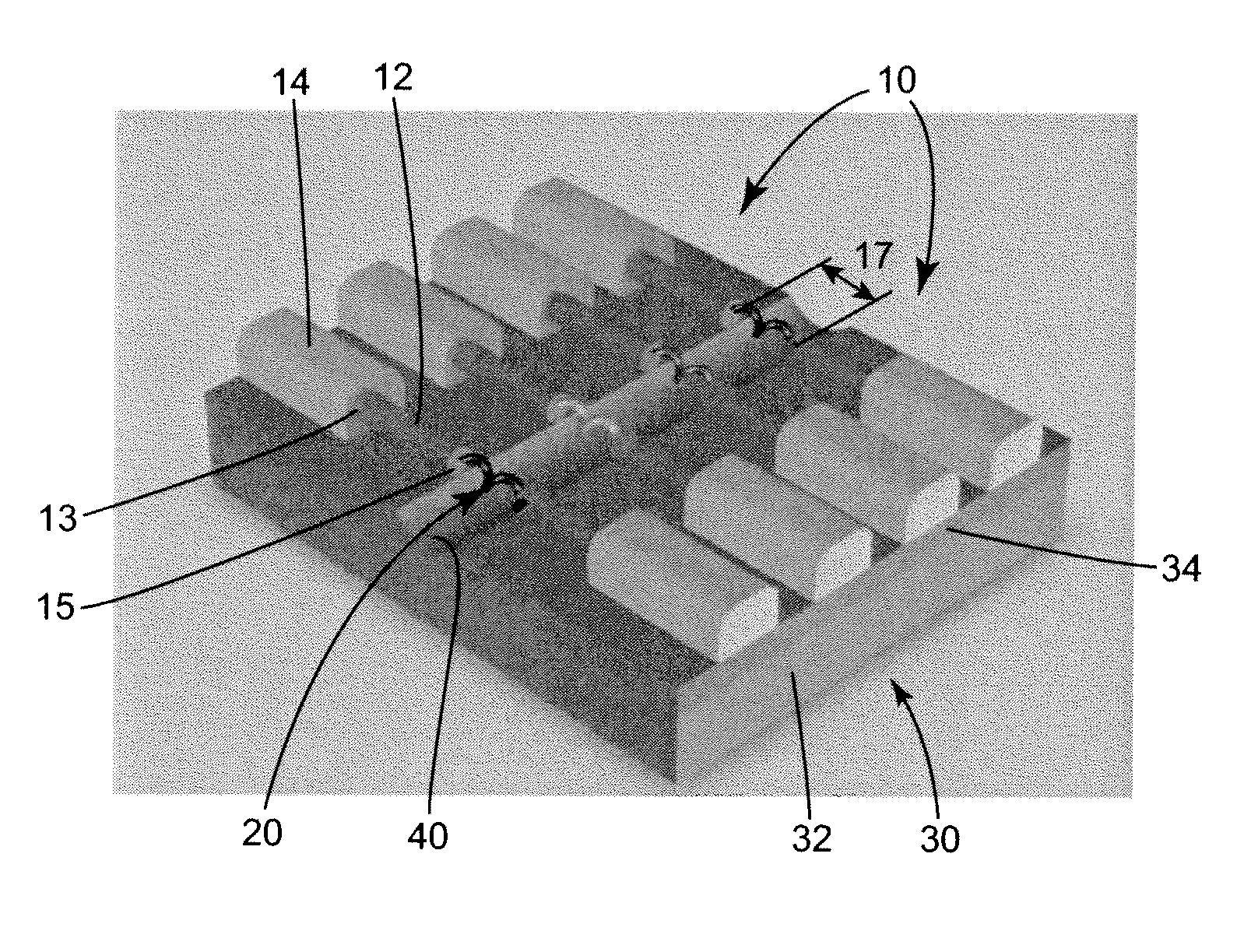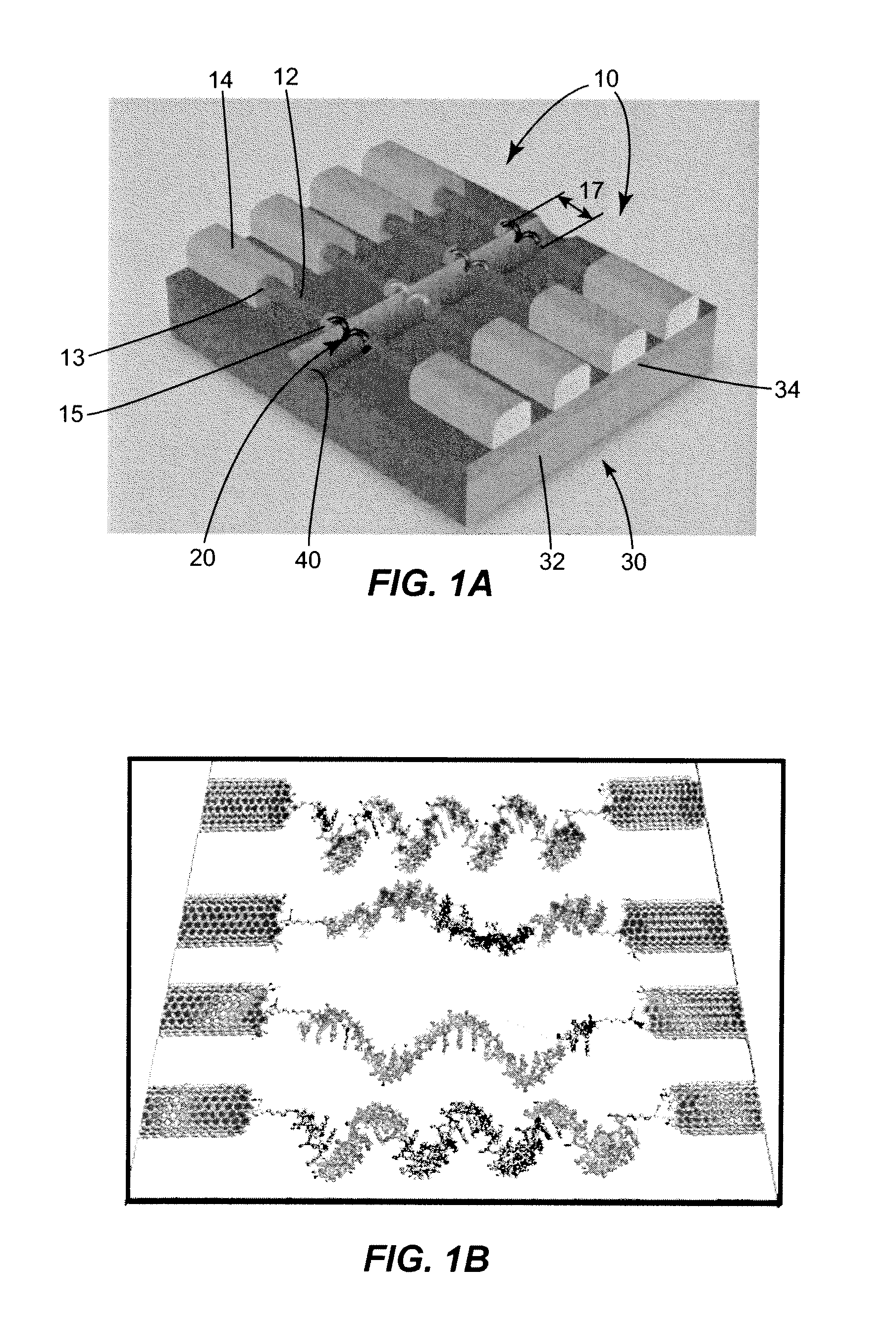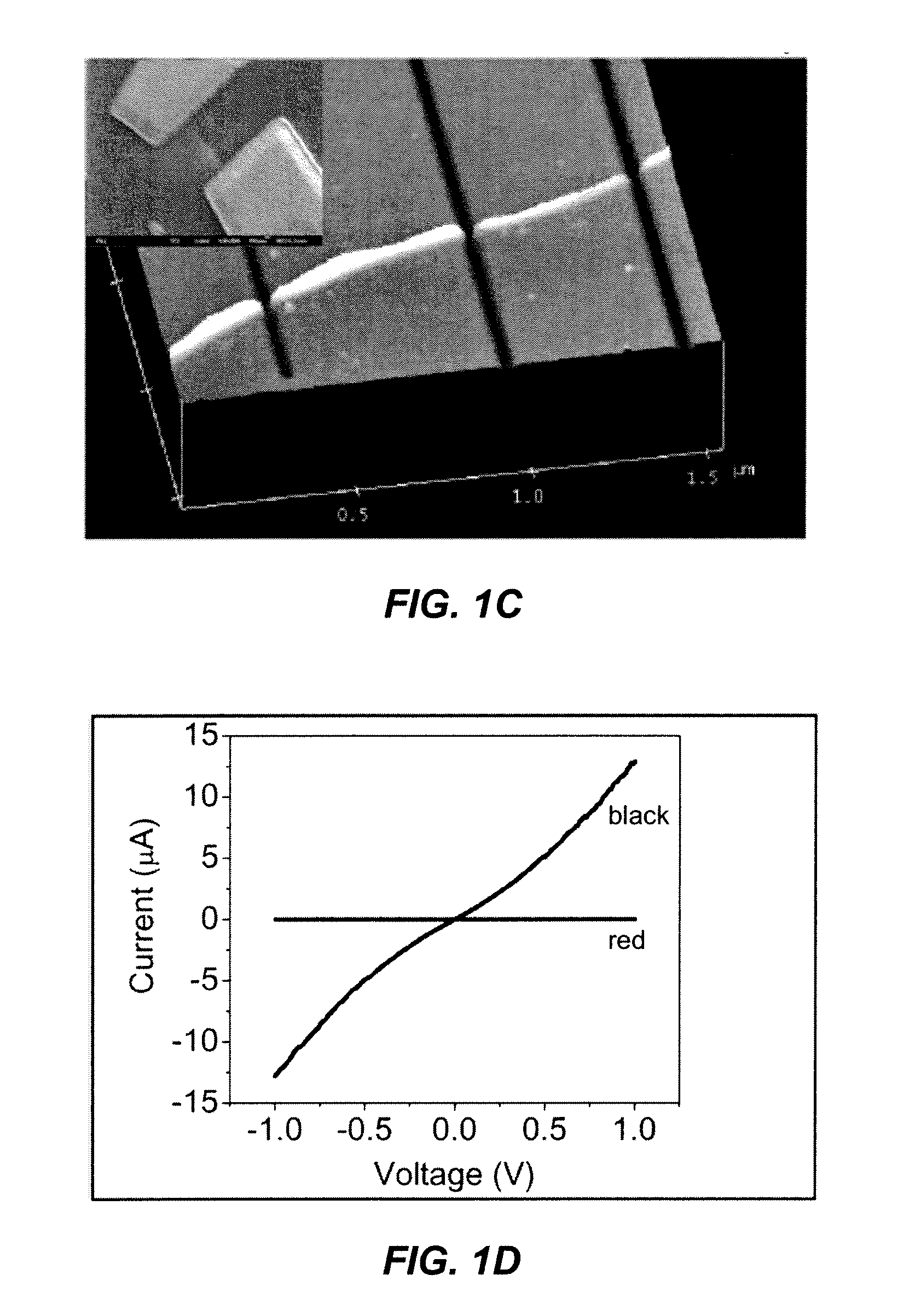Nanoscale DNA detection system using species-specific and/or disease- specific probes for rapid identification
a dna detection and species-specific technology, applied in the field of detecting dna molecules, can solve the problems of limiting the use of dna in research laboratories, requiring highly precise and expensive instruments, and limiting the shelf life of dna, so as to improve the probability of selective hybridization and accurately detect a single molecule of dna
- Summary
- Abstract
- Description
- Claims
- Application Information
AI Technical Summary
Benefits of technology
Problems solved by technology
Method used
Image
Examples
Embodiment Construction
[0020]FIG. 1A illustrates a schematic of the DNA detection array assembled in accordance with the teachings of an example of the present invention, where a pair of carbon nanotube (CNT) electrodes 10 is connected to a single stranded DNA (ssDNA) probe 20 with a distinct base sequence. FIG. 1A illustrates that each electrode 10 includes a carbon nanotube 12 that is terminated at a first end 13 by a terminal 14. The ssDNA probe 20 is coupled at a second end 15 of the carbon nanotube 12. Thus, the ssDNA probe 20 is disposed in a gap 17 between second ends of two carbon nanotubes 12. In the embodiment illustrated in FIG. 1A, the electrodes 10 are disposed on a silicon chip 30 having a silicon layer 32 and a silicon dioxide (SiO2) substrate layer 34. Between the second ends of each pair of carbon nanotube portions 12 is a trench 40 in the substrate layer 34. As illustrated in FIG. 1A, the ssDNA probe 20 is suspended by the second ends of the carbon nanotubes 12 over the trench 40.
[0021]F...
PUM
| Property | Measurement | Unit |
|---|---|---|
| Diameter | aaaaa | aaaaa |
| Electric potential / voltage | aaaaa | aaaaa |
| Electrical conductance | aaaaa | aaaaa |
Abstract
Description
Claims
Application Information
 Login to View More
Login to View More - R&D
- Intellectual Property
- Life Sciences
- Materials
- Tech Scout
- Unparalleled Data Quality
- Higher Quality Content
- 60% Fewer Hallucinations
Browse by: Latest US Patents, China's latest patents, Technical Efficacy Thesaurus, Application Domain, Technology Topic, Popular Technical Reports.
© 2025 PatSnap. All rights reserved.Legal|Privacy policy|Modern Slavery Act Transparency Statement|Sitemap|About US| Contact US: help@patsnap.com



